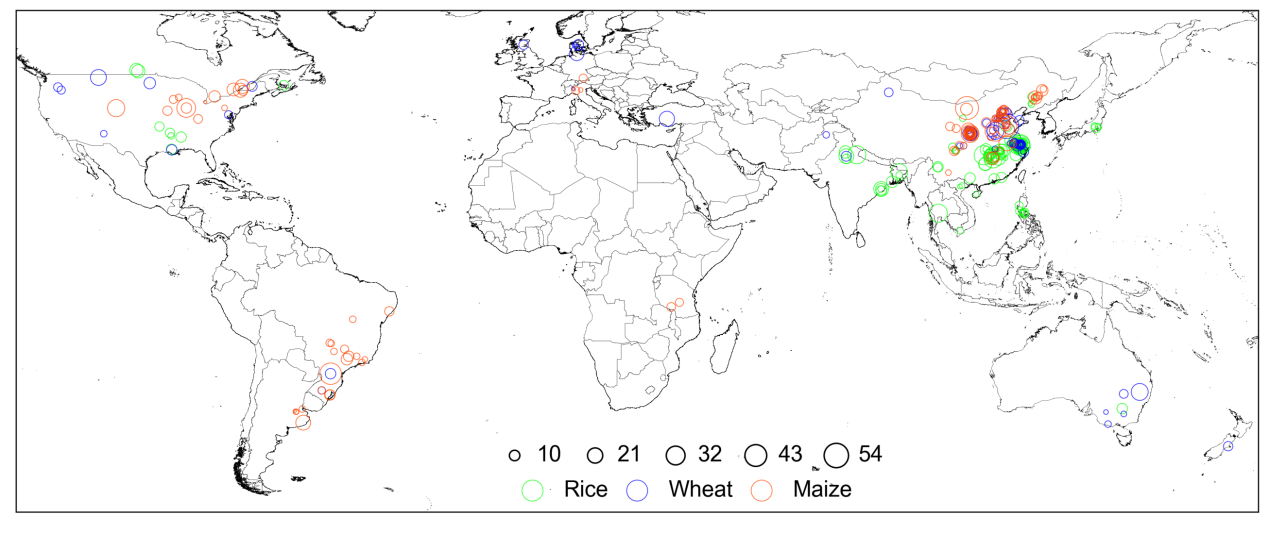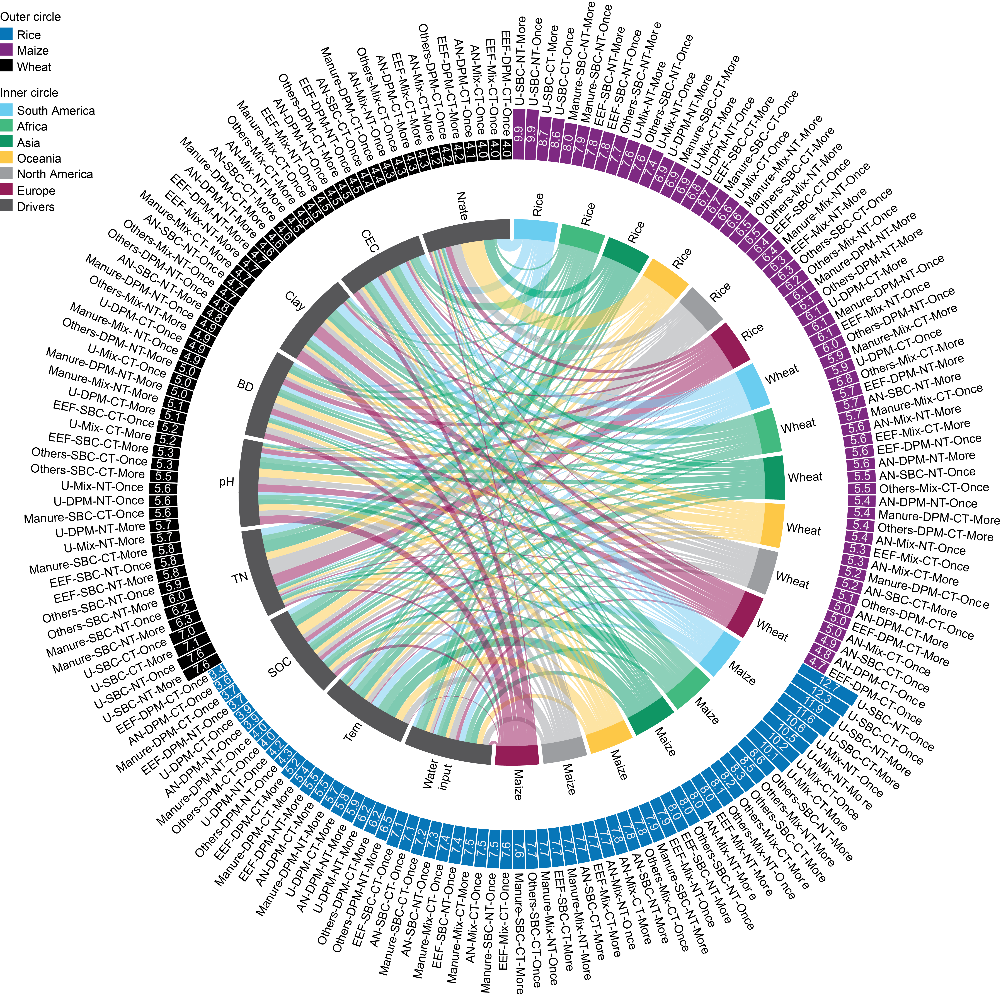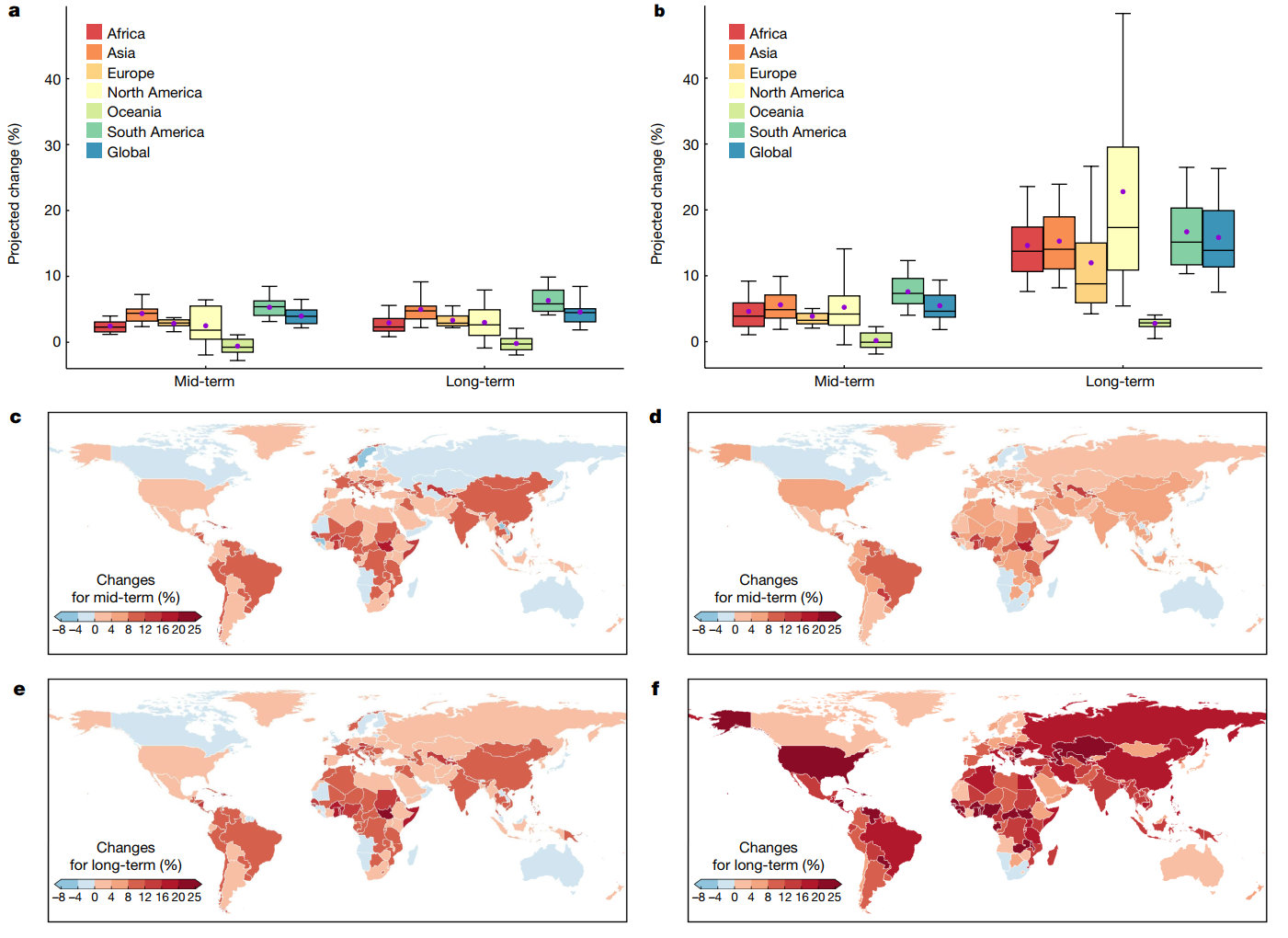Researchers use machine learning to guide global agricultural ammonia emissions reduction
Ammonia (NH3) is a major air pollutant and a key driver of smog formation. Agricultural emissions are the leading source of NH3, accounting for approximately 51-60% of global anthropogenic NH3 emissions, of which more than half come from rice, wheat, and maize cultivation.
Due to the continued growth of population and food demand, global agricultural nitrogen input is projected to increase by 46% by 2050 compared to 2010. Therefore, reducing agricultural NH3 emissions under the trend of increasing nitrogen input is one of the urgent challenges to be addressed for global sustainable development.
Agricultural NH3 emissions depend on nitrogen application rate and NH3 emission factor (EF). NH3 EFs vary significantly in space due to the combined influence of natural and anthropogenic factors, and there is still a lack of accurate characterization at the global scale, which hinders countries around the world from carrying out emission reduction practices tailored to local conditions.

The research team led by Professor Yi Zheng from the School of Environmental Sciences and Engineering (ESE) at the Southern University of Science and Technology (SUSTech) has collected and compiled field observation data of NH3 emission rates from 2775 site-years worldwide (Figure 1). They trained and cross-validated a random forest machine learning model. The results showed that the NH3 EF can be accurately predicted globally (R2>0.80) using six categories of input variables, including climate, soil characteristics, crop types, irrigation water, and fertilization and tillage practices.
Their study, entitled “Fertilizer management for global ammonia emission reduction”, has been published in Nature, one of the world’s leading multidisciplinary science journals.

Figure 1. Regional distribution of the sites used in this study (rice, wheat, and maize). The size of each black circle represents the corresponding sample size.
The research team used global datasets of soil (HWSD v1.2 and ISRIC-WISE), climate (CRU v4.05), irrigation (National Qinghai-Tibet Plateau Science Data Center), and fertilizer application (HaNi dataset and EarthStat dataset) to drive random forest models, producing a global agricultural NH3 EF and emission intensity dataset with a grid resolution of 5 arc minutes (about 10 km) (Figure 2). They then recalculated the total global agricultural NH3 emissions: in 2018, the total NH3 emissions from rice, wheat, and maize cultivation was 4.3 Tg N, with the three crops contributing 41.1%, 30.2%, and 28.7%, respectively. This estimate is significantly lower than previous estimates, mainly because previous studies did not fully consider the role of agricultural fertilizer management measures in calculating EFs.

Figure 2. Global cropland NH3 EFs and emissions at a five-arcminute resolution in 2018 derived by machine learning (ML). The global maps of the NH3 EFs for rice (a), wheat (b) and maize (c). Mapping of NH3 emissions per unit fertilized hectares of rice (d), wheat (e), and maize (f).
The novel model and data provide a global perspective for studying the impact of fertilizer management on NH3 emissions. On average, globally, the highest NH3 EF corresponds to applying a urea surface broadcast once or more than once during the growing season under no-tillage, while the lowest NH3 EF corresponds to applying an enhanced-efficiency fertilizer deep placement once under conventional tillage (Figure 3).
Due to geographical differences, the optimized fertilizer management for NH3 emission varies from place to place. For example, the model evaluation results show that 83% of global rice cultivation grids can optimize NH3 emission reduction by using enhanced-efficiency fertilizers (EEFs), while the proportions of rice cultivation grids suitable for manure and ammonium nitrate (AN) are 6% and 3%, respectively; for wheat, the proportions of grids suitable for EEFs and AN are 61% and 37%, respectively; for maize, the proportions of grids suitable for EEFs and AN nitrate are each 50%.

Figure 3. EFs conditioned on management practices and importance analysis. The outer circle shows the global mean EFs produced under different management combinations for our three focal crops. The numbers on the bars represent the EF values (%), which are also illustrated as the bar heights. The inner circle describes the permutation importance of the features for each continent. The widths of the link lines reveal the importance of each driver to different categories. EEF, enhanced-efficiency fertilizer; U, urea; AN, ammonium nitrate; SBC, surface broadcast; DPM, deep placement; Mix, a mix of SBC and DPM; NT, no-tillage; CT, conventional tillage; Once, once in each growing season; More, twice or more in each growing season; Water input, the sum of cumulative precipitation and irrigation amounts; Tem, cumulative mean daily air temperature during the growing season; SOC, organic carbon content; TN, soil N content; BD, bulk density; Clay, clay content; CEC, cation exchange capacity; Nrate, nitrogen application rate.
The novel model and data also provide scientific support for accurately assessing the potential of fertilizer management to reduce agricultural NH3 emissions. Simulation results show that, under the 2018 baseline scenario, global optimization of agricultural fertilizer management can potentially reduce NH3 emissions from the three major crops by a total of 1.6 Tg N (a reduction of 38%), with wheat, maize, and rice contributing 26%, 27%, and 47% of the reduction, respectively. Due to climate change, agricultural NH3 emissions are expected to increase further in the future.
The machine learning model predicts that, under the SSP1-2.6 and SSP5-8.5 emission scenarios, global agricultural NH3 emissions will increase by 4.0% and 5.5%, respectively, between 2030 and 2060. Therefore, only 15% of the potential reduction in NH3 emissions from fertilizer management (38%) is needed to offset this increase. However, the impact of climate change on agricultural NH3 emissions varies significantly by region (Figure 4), and countries with the most significant increases, such as China, India, the United States, and Brazil, have an urgent need to optimize fertilizer management.

Figure 4. Projected changes in NH3 emissions for 2030-2100 relative to the reference year (2018). a, b: Boxplots of the global and continental changes in NH3 emissions under SSP1-2.6 and SSP5-8.5 estimated with our RF model (n=20). The boxplots show the median (horizontal line), 25-75th percentile (box), and 5-95th percentile (whiskers) of the estimated changes for all years and country combinations relative to the reference year (2018). A purple dot represents the mean value. c-f: Projected changes in the country-level NH3 emissions under SSP1-2.6 (c, e) and SSP5-8.5 (d, f) for the mid- (2030-2060) and long-term (2061-2100) horizons relative to the reference year (2018).
Overall, this research provides a high-resolution picture of global agricultural NH3 emissions, offering guiding suggestions for implementing localized emission reduction measures worldwide. It points out that the current global efforts to reduce emissions still face significant obstacles, such as high economic costs and small farm size (i.e., insufficient agricultural intensification). The research results have important implications for policy-making and management practices aimed at preventing haze and ensuring food security. They also demonstrate the great potential of big data and artificial intelligence in supporting the achievement of sustainable development goals, including “zero hunger”, “good health and well-being”, and “climate action”.
Dr. Peng Xu from the School of ESE at SUSTech is the first author of this paper. Geng Li, a doctoral student at the Hong Kong University of Science and Technology (HKUST) and former Research Assistant at SUSTech, is the co-first author. Professor Yi Zheng is the corresponding author, and Chair Professor Jimmy C.H. Fung of HKUST is the co-corresponding author. SUSTech is the first affiliation of the paper.
Other collaborators include Professor Shu Tao from Peking University (PKU) and SUSTech, Professor Benjamin Z. Houlton from Cornell University, Professor Min Hu from PKU, Professor Anping Chen from Colorado State University, Professor Jiafu Mao from Oak Ridge National Laboratory, Chair Professor Alexis K.H. Lau from HKUST, Assistant Professor Yilin Chen from Peking University Shenzhen Graduate School, and Dr. Xiaoqing Cui from Beijing Forestry University. Additional contributors from SUSTech included Chair Professor Yan Zheng, Associate Professor Zhenzhong Zeng, Associate Professor Huizhong Shen, Associate Professor Lian Feng, and Assistant Professor Zhilin Guo, all of the School of ESE.
This study was supported by the National Natural Science Foundation of China (NSFC), Natural Science Foundation of Guangdong Province, Research Grants Council of the Hong Kong Special Administrative Region, and the Earth and Environmental Systems Sciences Division of the Biological and Environmental Research Office in the Office of Science of the US Department of Energy.
The researchers also acknowledge the support of the Institute of Soil Science, Chinese Academy of Sciences, Nanjing Agricultural University, and the Chinese Academy of Agricultural Sciences for providing data.
Paper links:
https://www.nature.com/articles/s41586-024-07020-z
